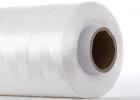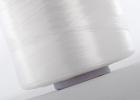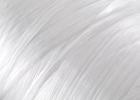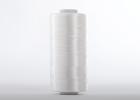PTFE: Synthetic Fluoropolymer FIber
Key Features of PTFE
- Excellent chemical resistance
- Excellent flame resistance
- Excellent UV resistance
- Excellent temperature resistance
- Excellent abrasion resistance
- FDA Approved versions available
History
PTFE is a synthetic fluoropolymer that was accidentally discovered by Roy Plunkett of DuPont in 1938. In 1941, the polymer was trademarked under the name Teflon™. Fibers have been produced from the PTFE polymer since the 1950’s.
Composition
PTFE fibers are typically produced using two different methods. The first method is matrix-spun, in which the fiber produced is round and brown in color. The second method, referred to as paste-extrusion, produces a flat white finished product. Typically, fibers produced using paste-extrusion have higher tenacity.
FIBER-LINE® Enhancing Processes for PTFE:
FIBER-LINE® PTFE Products:
Manufacturer
Gore, Lenzing, Toray, Other various suppliers
Common Deniers
Various sizes available
PTFE Bare Fiber Performance
CHEMICAL COMPATIBILITY
Chemical Resistance to Acid: Excellent
Chemical Resistance to Alkali: Excellent
Chemical Resistance to Organic Solvent: Excellent
PTFE Data
Typical Properties
| Property | UOM | Value |
|---|---|---|
| Breaking Tenacity | g/d | 1.5 - 2.0 |
| Specific Gravity | Ratio | 2.10 |
| Elongation @ Break | % | 30.0 |
| Tensile Modules | g/d | 5.0 - 15.0 |
| Moisture Regain* | % | 0 |
| Creep** | % | N/A |
| Shrinkage*** | % | <11.0 |
| Melt Point | ℃ | 327 |
| Decomposition Temp. | ℃ | 508 |
* Equilibrium moisture regain @ 55% RH ** Creep @ 40%-58% ultimate tensile strength *** Shrinkage in dry air @ 177 C for 30 minutes
This data is provided for informational purposes only, and does not constitute a specification. FIBER-LINE makes no warranty, express or implied, that the product conforms to these values. Contact your FIBER-LINE representative for exact product details which conform to your specific requirements.



